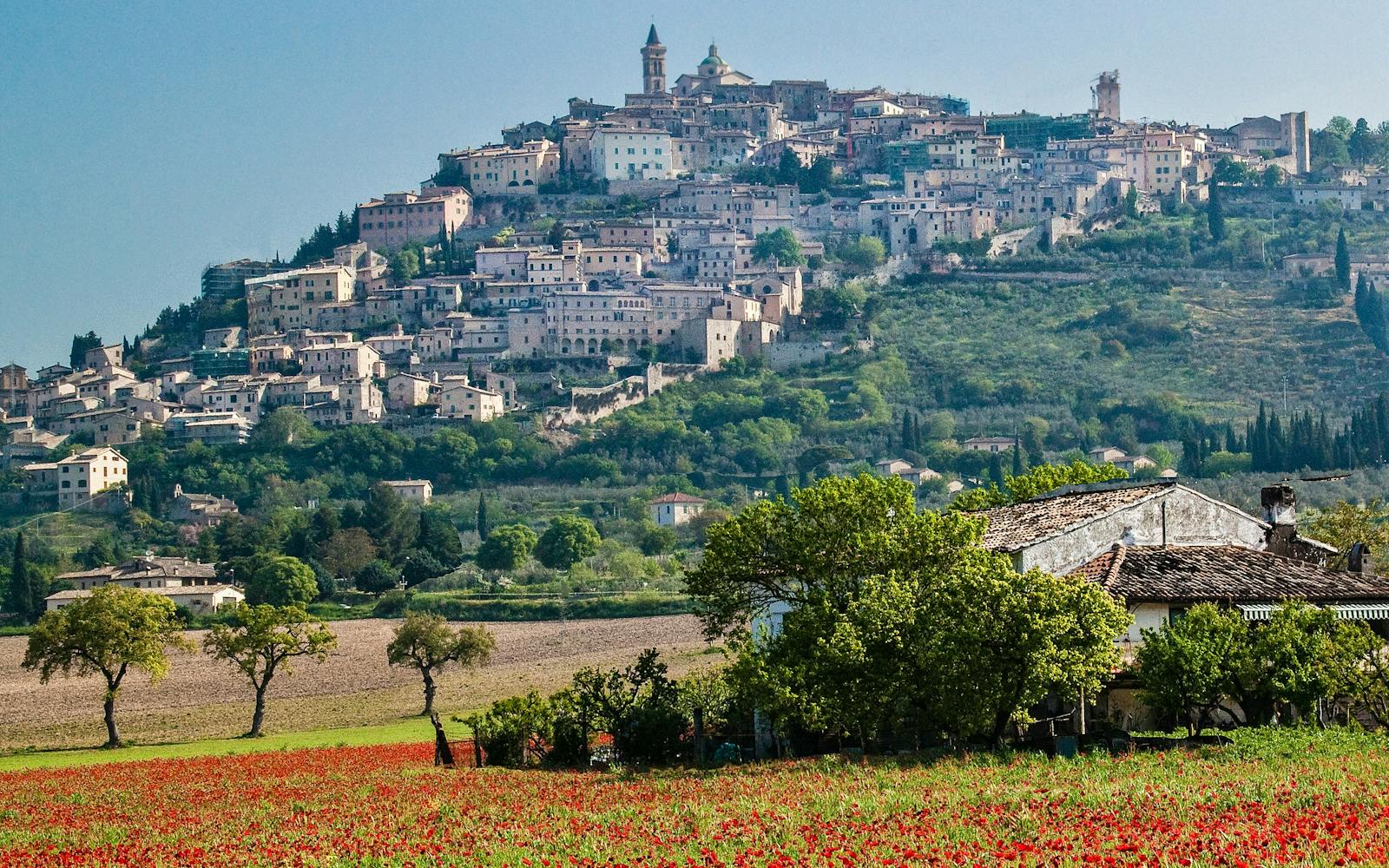

Today, the Torta al Testo, known in Umbertide as Torta sul Panaro, is found everywhere, but rarely made in the traditional way. Often cooked on non-stick pans or cast iron griddles, it has lost the authentic flavor that only ash baking can provide. For our Cesarina Simonetta, this technique is essential: the secret lies in keeping the ashes warm with a perfect balance of embers and flame. The testo can be made of terracotta, stone, or cast iron—Simonetta’s was handcrafted years ago under the guidance of an expert farmer. Following an ancient method, she selected the right clay, mixed it with baked marble powder, shaped it, and fired it overnight under the fireplace embers. Once a substitute for bread when supplies were low, today, Torta al Testo is a symbol of Umbrian tradition waiting to be rediscovered.

The Traditions of Val Tiberina with Our Cesarina Simonetta
Umbertide, nestled in the heart of the Upper Tiber Valley, is surrounded by the Tevere and Reggia rivers, which flow along its medieval walls. Following the Reggia, you reach Podere Battistacci in Torre Certalda, where Simonetta welcomes guests into her Umbrian country home. Here, culinary traditions come to life with organic ancient grain flours, stone-milled in a water-powered mill, used to prepare bread and other specialties.
Raised among treasured family recipes, Simonetta learned the art of home cooking from the women in her life and from Italy’s great culinary classics like Artusi and Ada Boni. A devoted advocate of Slow Food philosophy, she selects fresh ingredients from local producers and loves sharing stories and flavors with her guests. For her, inviting someone to the table means taking care of their happiness, just as Brillat-Savarin’s famous aphorism says: “To invite someone is to take responsibility for their happiness as long as they are under your roof”.

Torta al Testo: A Taste of Umbrian Tradition
Crispy on the outside, soft on the inside, and irresistibly fragrant, Torta al Testo is an icon of Umbrian cuisine, originally created as a quick alternative to bread. Its name comes from the testo, the heavy griddle made of cast iron, terracotta, or stone used for cooking. Traditionally, it was prepared directly on embers and covered with hot ashes, giving it a unique aroma, though today, the testo is heated on a stove.
The recipe is simple: flour, water, salt, and either yeast or baking soda, forming a soft dough that is cooked until golden brown. The real secret is the filling. Torta al Testo is best enjoyed with sausage and sautéed chicory, prosciutto and cheese, or as the perfect accompaniment to soak up rich sauces like Pollo all’Arrabbiata. A symbol of conviviality, this street food tells the story and flavors of Umbria—one bite, and you’re hooked.

Torta al Testo
The Umbrian rustic flatbread, crispy on the outside and soft on the inside, perfect for filling in a thousand different ways
Ingredients
- Half a kilo of type 1 soft wheat flour
- 16 g of baking powder for savory pies
- Salt
- Water
Method
- Knead the flour, preferably stone-ground as it was done in the past, with water, salt, and yeast. The water should be added gradually to obtain a soft dough (work the ingredients gently to avoid it becoming too firm), and the yeast can be replaced with baking soda, as was traditionally done.
- Roll it out to form a disc the same size as the "testo" used for cooking (about 28 centimeters in diameter).
- Meanwhile, heat the "testo" directly on the front of the fireplace (or alternatively, on the stove) and check the temperature by sprinkling flour on it: it should toast but not burn.
- Once the right temperature is reached, place the dough disc on the "testo" and prick it with a fork to prevent bubbles from forming. When it has formed a crust on the bottom, flip it over and cover it with hot ash. After about twenty minutes, you can remove the "testo" from the fireplace. Before serving the torta, carefully remove the ash.
- Traditionally, it was broken by hand and filled with roasted sausages and wild herbs or with very fatty ham. The torta al testo is also used to fully enjoy the sauce of dishes like chicken in a spicy sauce (pollo all'arrabbiata).

In the heart of Italy: all the experiences of Cesarine in the enchanting Umbria
Discover the authentic food and wine experiences of the Cesarine in Umbria: traditional dishes, local ingredients, and recipes passed down through generations, for an unforgettable culinary journey in the land of good food.